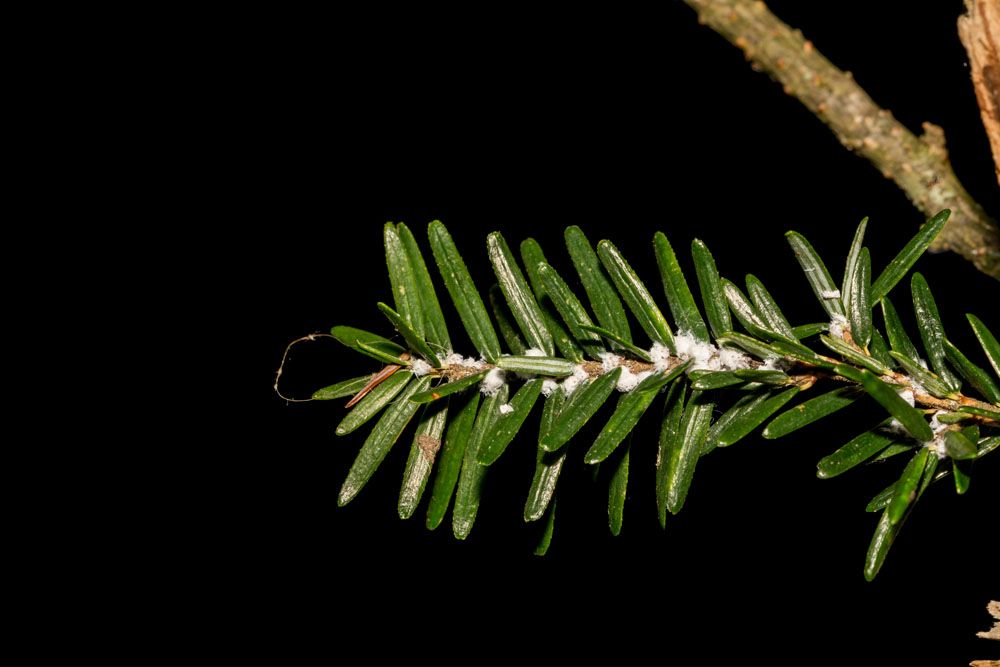
Hemlock Woolly Adelgid – Adelges tsugae
Hemlock Woolly Adelgid (Adelges tsugae)
Common Name: Hemlock Woolly Adelgid
Latin Name: Adelges tsugae
Appearance:
- This beetle may be identified by the appearance of a dried, white fuzzy material on young hemlock twigs.
- This “wool” can be seen all year, although it is most profuse and noticeable in the spring when egg masses are present.
- Except for the first stages of development, the wool completely encases the insect.
- Their woolly coat swells as they feed—the “wool” is a waxy compound that seeps out of pores on the insect’s body.
- When mature, it resembles the tip of a cotton swab but can be up to 1/8th inch in diameter.
Host plant:
Eastern and Carolina hemlocks, native to Japan and China, are the most susceptible. They can grow on all hemlock tree species.
Territory:
The adelgid thrives in Asia (China, India, Japan, Taiwan, Canada, and United States).
Damages caused by Hemlock Woolly Adelgid:
The insects cause injury by sucking sap and injecting poisonous saliva while eating. Damage from accumulating damage leads the needles on infected branches to dry, develop a grayish-green tint, and ultimately fall from the tree. Buds are also eliminated, resulting in limited new development in affected branches. However, the infestation may be found throughout the tree, and severe limb dieback proceeds from the bottom up. Trees weakened by HWA are more susceptible to illnesses and wood-boring insects and easily damaged and tossed by the wind.
Life history and habits:
Hemlock woolly adelgid in our region performs two main generations a year. A broad chronology is shown below. Adults of the overwintering generation deposit up to 300 eggs beneath their woolly coats throughout March and April. Crawlers hatch from April to May and then settle on twigs near the needle bases, where they place their piercing and sucking mouthparts. They feed their throughout their development. This spring, the generation develops around the middle of June and lays 75 eggs on average. Crawlers emerge in early July and settle on fresh growth. By the beginning of August, they are mostly established and inert. Feeding continues in mid-October, and the distinctive fuzzy coat emerges. Nymphs feed throughout the winter and mature in the spring.
